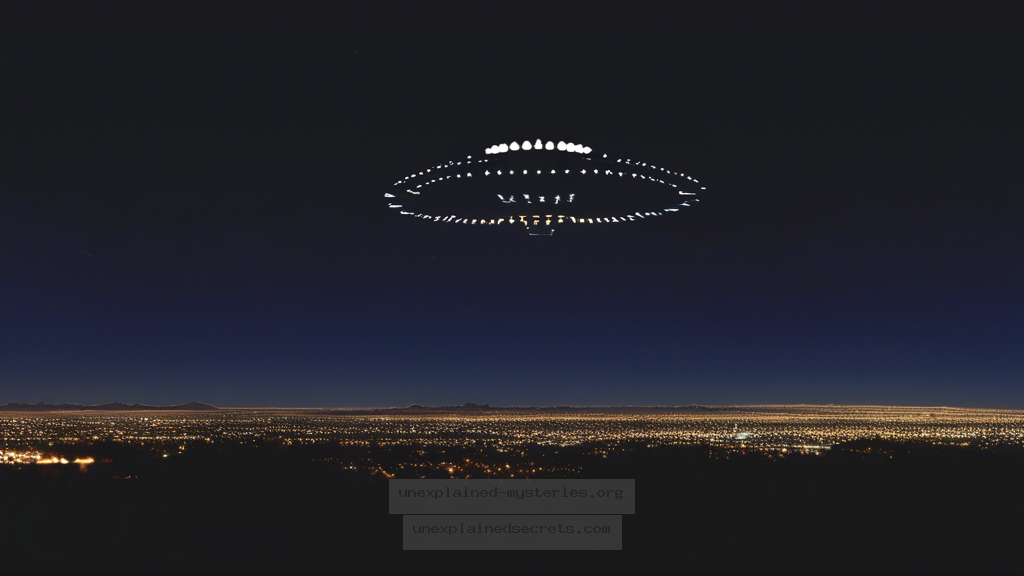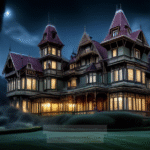What Happened During the Phoenix Lights Incident of 1997?
What Happened During the Phoenix Lights Incident of 1997?
The Phoenix Lights incident remains one of the most compelling and widely discussed UFO sightings in history. This mysterious event captured the attention of thousands of witnesses and has led to numerous theories regarding the potential existence of extraterrestrial life. Understanding what transpired that night is crucial for anyone interested in the UFO phenomenon, as it serves as a landmark case that continues to fuel debates about government transparency, public perception of UFOs, and the possibility of alien encounters. 🌌
Historical Context of the Phoenix Lights
The Phoenix Lights incident took place on March 13, 1997, over the cities of Phoenix and Tucson, Arizona. This event is significant not only due to the large number of witnesses (estimates range from 10,000 to 20,000) but also because of the extensive media coverage that followed. The timeline of events began around 7:30 PM when residents reported seeing a series of lights in a V-shaped formation moving silently across the sky.
The origins of the Phoenix Lights can be traced back to the earlier sightings of unidentified flying objects in the years leading up to 1997. Reports of strange lights and crafts in the skies were common, but the Phoenix Lights incident brought a level of visibility and credibility that was unprecedented. The event gained additional traction when Arizona Governor Fife Symington held a press conference to address the sightings, initially dismissing them as flares but later admitting to having seen the lights himself. This change in tone from a government official added an intriguing layer of complexity to the story. 📈
Core Concepts and Theories
Several theories abound regarding what the lights could have been, ranging from military flares to extraterrestrial spacecraft. The most popular theories include:
- Military Flares: The U.S. military later claimed that the lights were flares dropped by aircraft during a training exercise at the Barry Goldwater Range. However, many witnesses contested this explanation, citing the lights’ unusual formation and lack of sound.
- Extraterrestrial Craft: Some believe that the lights were evidence of an extraterrestrial presence, with many witnesses describing the craft as large, silent, and structured, contradicting the military flare theory.
- Atmospheric Phenomena: Others suggest that the lights could have been a natural atmospheric phenomenon, although this theory lacks substantial scientific backing.
The debate continues as new evidence and testimonies surface. Understanding these theories is essential for anyone delving into the mystery of the Phoenix Lights. 💡
Practical Implications and Evidence
The implications of the Phoenix Lights incident extend beyond the event itself. It raises questions about government accountability and transparency regarding UFO sightings. The fact that a state governor later admitted to seeing the lights but initially dismissed them raises significant concerns regarding the public’s right to know about potential extraterrestrial encounters.
Furthermore, the Phoenix Lights incident has led to calls for more rigorous investigations into UFO sightings. Organizations such as the Mutual UFO Network (MUFON) and the Center for the Study of Extraterrestrial Intelligence (CSETI) have dedicated resources to studying such phenomena. These groups aim to collect evidence, witness testimonies, and analyze data to provide a clearer understanding of what might be occurring in our skies.
Alternative Perspectives
While many focus on the lights themselves, alternative perspectives also warrant attention. Some skeptics argue that the massive number of witnesses could have simply been experiencing mass hysteria or misinterpretation of conventional aircraft. They emphasize the role of confirmation bias in interpreting ambiguous stimuli as extraterrestrial.
Additionally, psychological factors such as the social context and media influence can shape how individuals perceive and report sightings. This calls into question the reliability of eyewitness accounts, which, while compelling, are often subject to personal interpretation and error.
Common Misconceptions and Clarifications
One of the most prevalent misconceptions about the Phoenix Lights incident is the belief that all witnesses were uniformly convinced they saw an alien craft. In reality, testimonies vary widely, with some witnesses leaning towards the military flare explanation rather than an extraterrestrial hypothesis.
Another common misunderstanding is that the U.S. Air Force has remained entirely silent on the matter. In fact, they did release a statement attributing the lights to flares, but the inconsistency with eyewitness accounts has left many unsatisfied. The complexities surrounding the incident illustrate the challenges in navigating public perception and government communication regarding UFOs.
Best Practices for Investigation or Study
For those interested in investigating UFO sightings like the Phoenix Lights, several best practices can enhance the validity of research:
- Collect Eyewitness Accounts: Gather as many firsthand testimonies as possible, ensuring to document the time, place, and conditions of the sighting.
- Use Technology: Utilize video recording devices, drones, and other technology to capture evidence of sightings. This increases the reliability of documentation.
- Collaborate with Experts: Engage with astronomers, meteorologists, and other relevant experts to analyze data and provide scientific perspectives on sightings.
Adopting a multi-faceted approach to investigation can lead to a more comprehensive understanding of any UFO phenomena. ✅
Future Developments and Ongoing Research
The Phoenix Lights incident has paved the way for ongoing research into UFOs and potential extraterrestrial phenomena. Recent years have seen a resurgence in interest, particularly following the release of classified Pentagon videos showing unidentified aerial phenomena (UAP). These developments indicate a shift in how government entities are addressing the subject of UFOs.
Moreover, the scientific community is starting to take the investigation of UAPs more seriously. Projects like the U.S. government’s UAP Task Force aim to compile and analyze data related to unidentified encounters, which may yield new insights into the nature of these phenomena.
Conclusion
The Phoenix Lights incident stands as a pivotal moment in the history of UFO sightings. With thousands of witnesses, a variety of theories, and ongoing debates about government transparency, the event continues to intrigue researchers and enthusiasts alike. Understanding the historical context, examining core theories, and recognizing the practical implications of such sightings can provide a clearer picture of the phenomenon. As research continues and new evidence emerges, the quest to understand the Phoenix Lights—and what they may represent—remains an essential part of our exploration of the unknown. 🌠
Other Articles
Recent Posts
- What Happened to Flight MH370? The Conspiracy Theories That Still Haunt Us
- What Secrets Lurk Within the Walls of the Infamous Trans-Allegheny Lunatic Asylum?
- What Evidence Supports the Existence of Bigfoot in the Pacific Northwest?
- What Happened to the Indus Valley Civilization? Unraveling the Mysteries of Ancient Urban Life
- Can Telepathy Be Scientifically Proven Through Laboratory Evidence?







